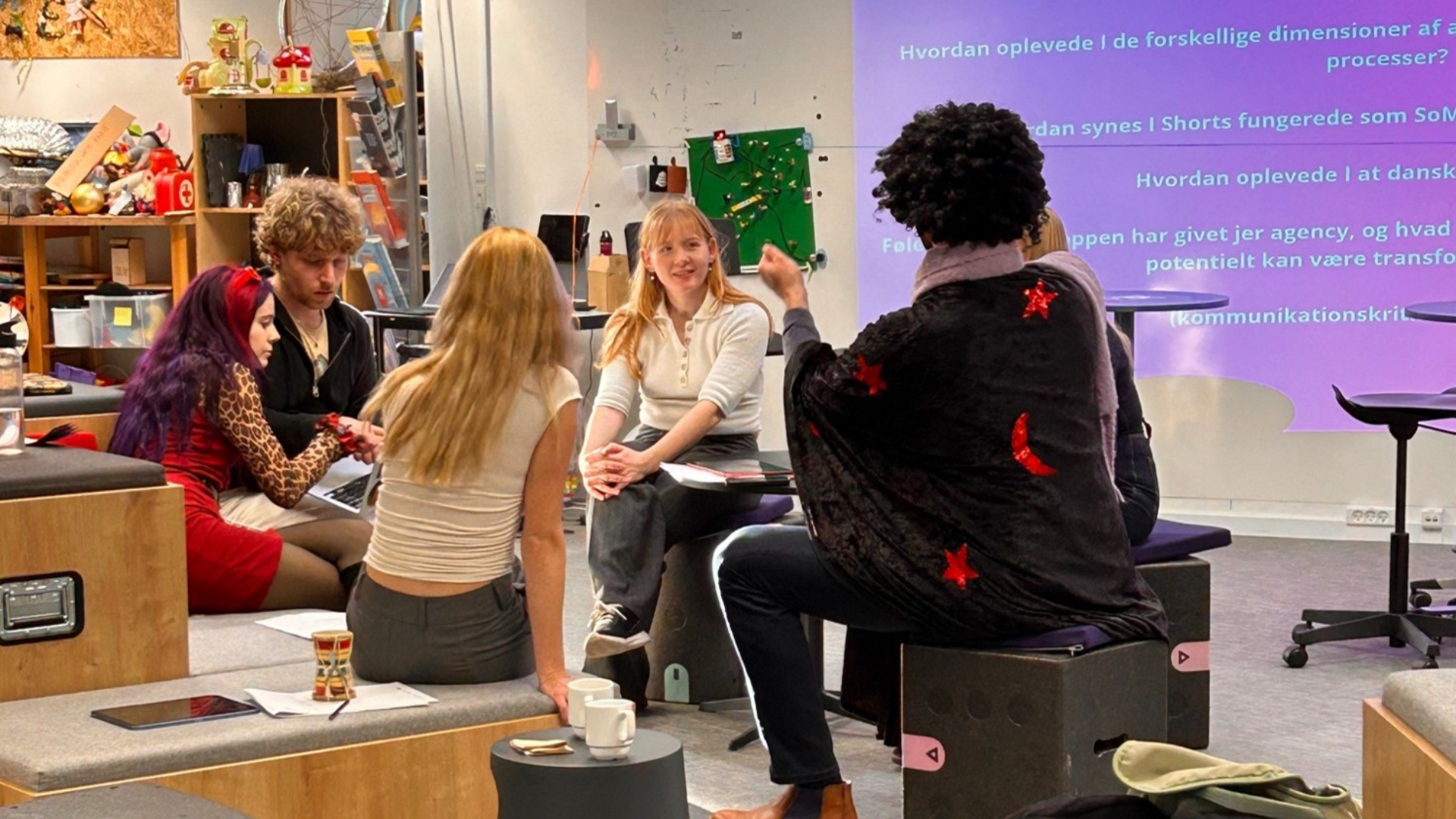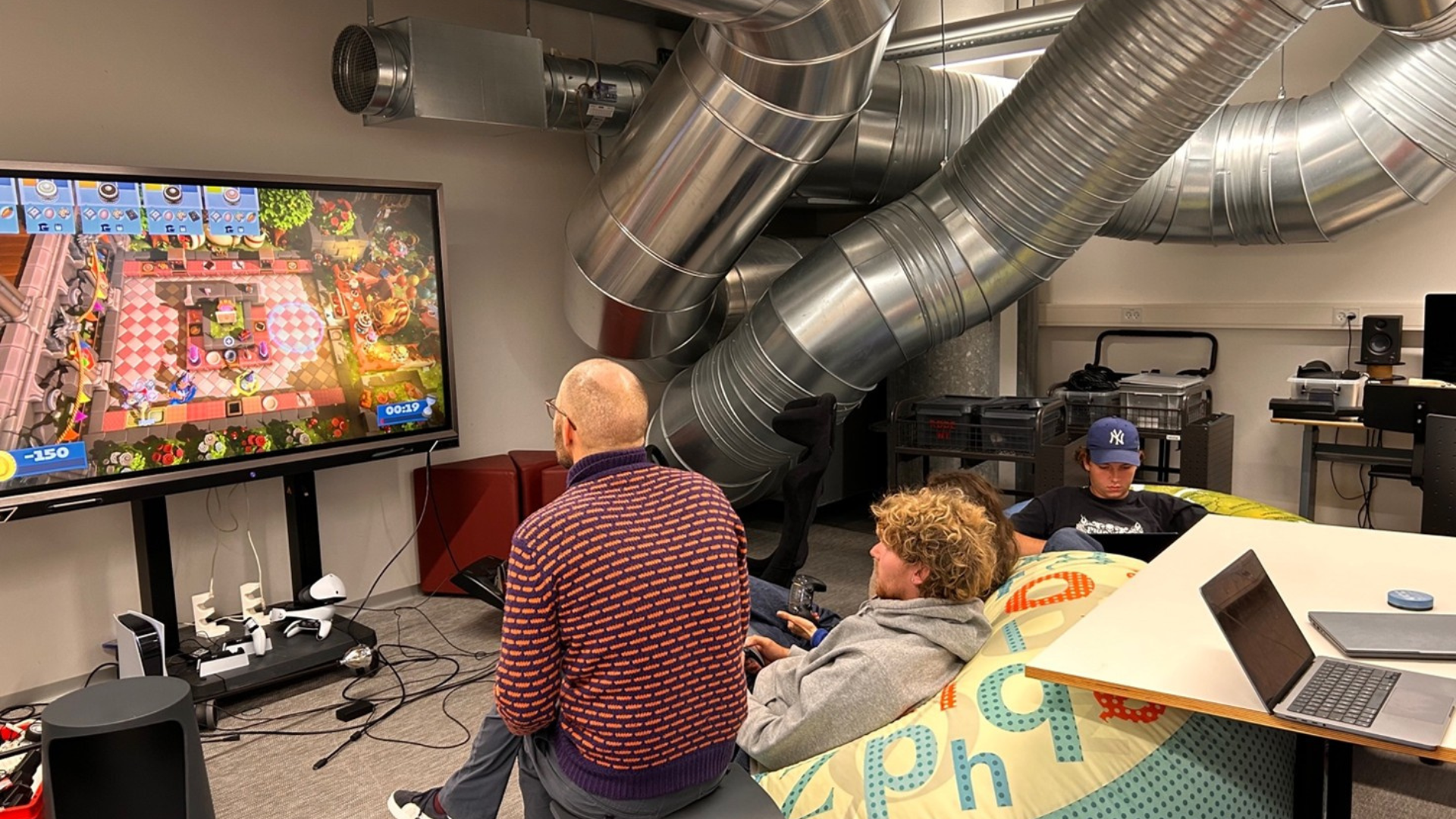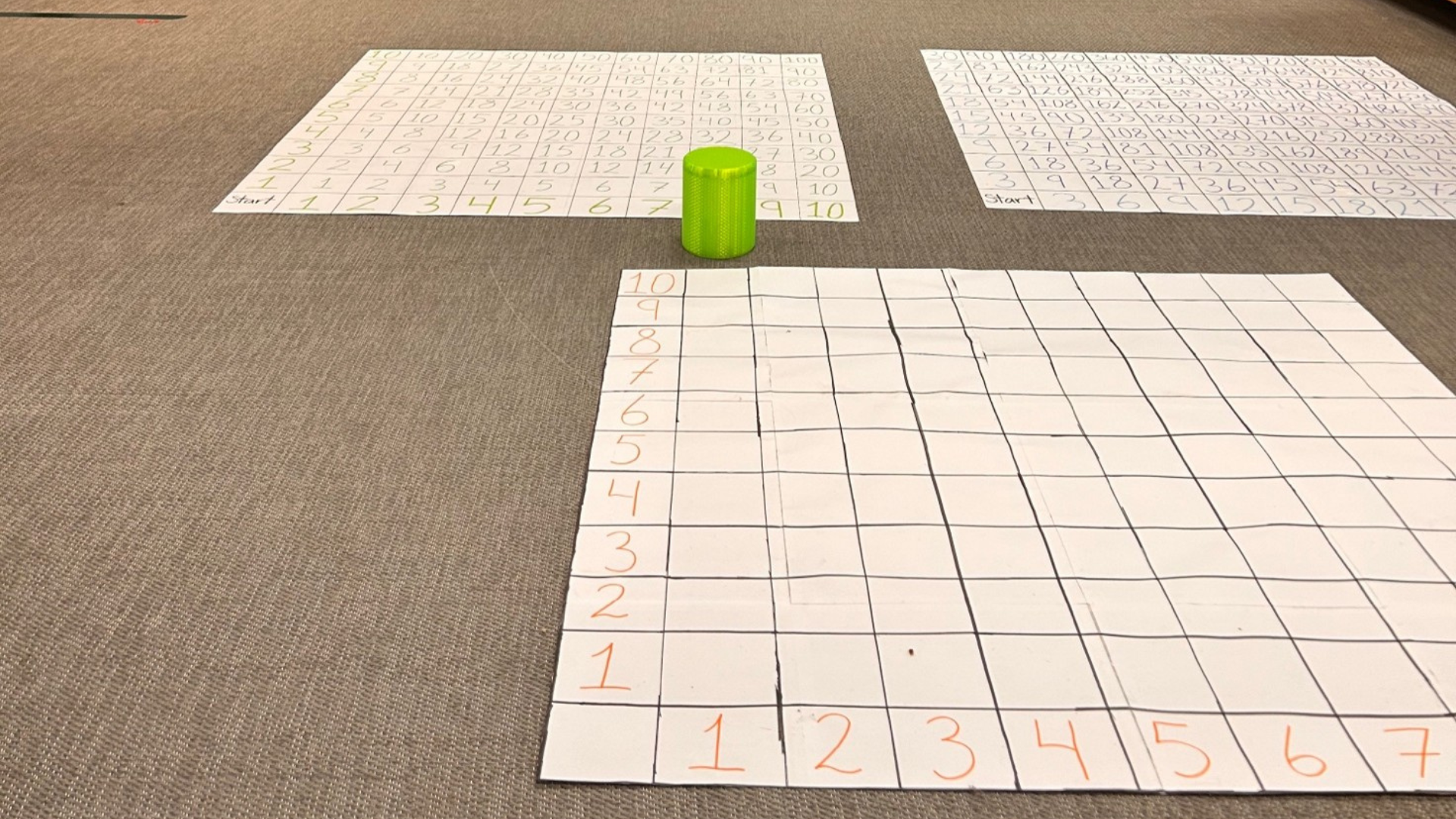
A living lab for tomorrow’s teachers
Eight years (and counting) of Future Classroom Teacher at KP
When we rolled the first tables into the Future Classroom Lab at University College Copenhagen (KP) eight years ago, the wheels were more than a practical choice; they signalled that nothing here should ever stand still. The lab has grown into a signature track on our teacher-education programme—Future Classroom Teacher—where technology comprehension is cultivated through continuous cycles of exploration, experiment and reflection.
A dual resource: space and practice
The Future Classroom Lab at KP is more than a well-equipped room; it is both a physical space and a pedagogical culture that has taken years to shape. The lab itself is structured around six flexible zones where students work with everything from VR and robotics to cardboard, glue guns and sewing kits. These tools are not there to impress—they are there to be used, misused, reimagined and occasionally broken in the process of learning. In that sense, the lab becomes a third teacher, nudging both students and staff out of habitual thinking and into a space of possibility.
But the true resource lies in the practice we have built within it. As Lise Dissing Møller, coordinator and lecturer in the Future Classroom Teacher (FCT) programme, puts it:
“Over these eight years, we’ve had to completely rethink what it means to teach. We’ve created a culture where the teacher is no longer the only brain in the room.”
This shift has not come easily. It has required the FCT teaching team to dismantle many of the traditional habits of higher education—habits of individualised planning, subject silos and fixed outcomes—and instead embrace shared design processes, co-teaching and experimental formats.
Through countless iterations, we have developed a common set of working principles. We co-plan, we co-fail, we co-reflect. It’s messy, and sometimes uncomfortable, but it’s real. Each module becomes a living experiment in how disciplinary knowledge, technology comprehension and lab-based didactics can merge into meaningful learning experiences. We model what we ask of our students: to take risks, reflect publicly, and build forward from failure. The result is a teaching culture where mistakes are treated as data, and where professional growth happens in relation—with colleagues, with students, and with the technologies at hand.
What does a semester look like?
Step into an ordinary Tuesday morning and you will see why we call it a living lab. A group of maths-majors huddle over discarded servo motors and popsicle sticks from the ”Trashlibrary”, hacking together kinetic sculptures, while next to them a team of art-and-music students fine-tune an AI-generated soundtrack for a green-screen performance. In another corner, future Danish teachers debate how a chatbot can scaffold peer feedback on creative writing. The materials range from cast-off “arbejdsdukker” to the latest maker tech, but the attitude is the same: try, err, adjust, repeat. We deliberately celebrate mistakes—because where there is friction, there is learning.
Across the term these micro-experiments accumulate into a full-scale public conference. As captured in a recent LinkedIn reflection, it is “crazy” to realise the presenters only started at KP in August, yet they already orchestrate Pecha-Kucha talks, hands-on workshops and scholarly reviews that fuse Danish, mathematics, game-based learning and educational psychology. Guests—school mentors, municipal consultants, alumni—join the lab to test the prototypes and stretch the students’ thinking before everything is rounded off with a written meta-reflection. The result is not a one-off show, but a visible arc of professional growth, powered by iterative design and communal critique.
Eight years of the long, hard play
Keeping an innovation profile alive inside a national curriculum has required what we affectionately call the long, hard play. Year after year we embed technology comprehension across subject didactics, co-create new assessment forms that value creativity and critical digital literacy, and nurture a community that now spans alumni, municipalities and international partners. The lab has become less a room than a culture—one that invites every participant to question, prototype and re-imagine teaching.
What’s next?
Looking toward year nine, we are expanding our Computational Empowerment strand with AI literacy studios and launching a visiting-scholar programme for colleagues across the European Schoolnet network. Most importantly, we are compiling an open recipe book focused on digital bildung and children’s agency over their own executive functions when they encounter immersive, experience-design technologies. The collection—developed within the StepIT project in collaboration with the Department of Psychology at the University of Copenhagen—translates research on cognitive control into classroom-ready, tech-rich learning scenarios.
If you are searching for a model of long-term, laboratory-based teacher education that turns curiosity into systemic change, come and roll a few tables with us in Copenhagen. In the Future Classroom Lab, the next experiment is always just one playful conversation away.
Author: Martin Thun Klausen

